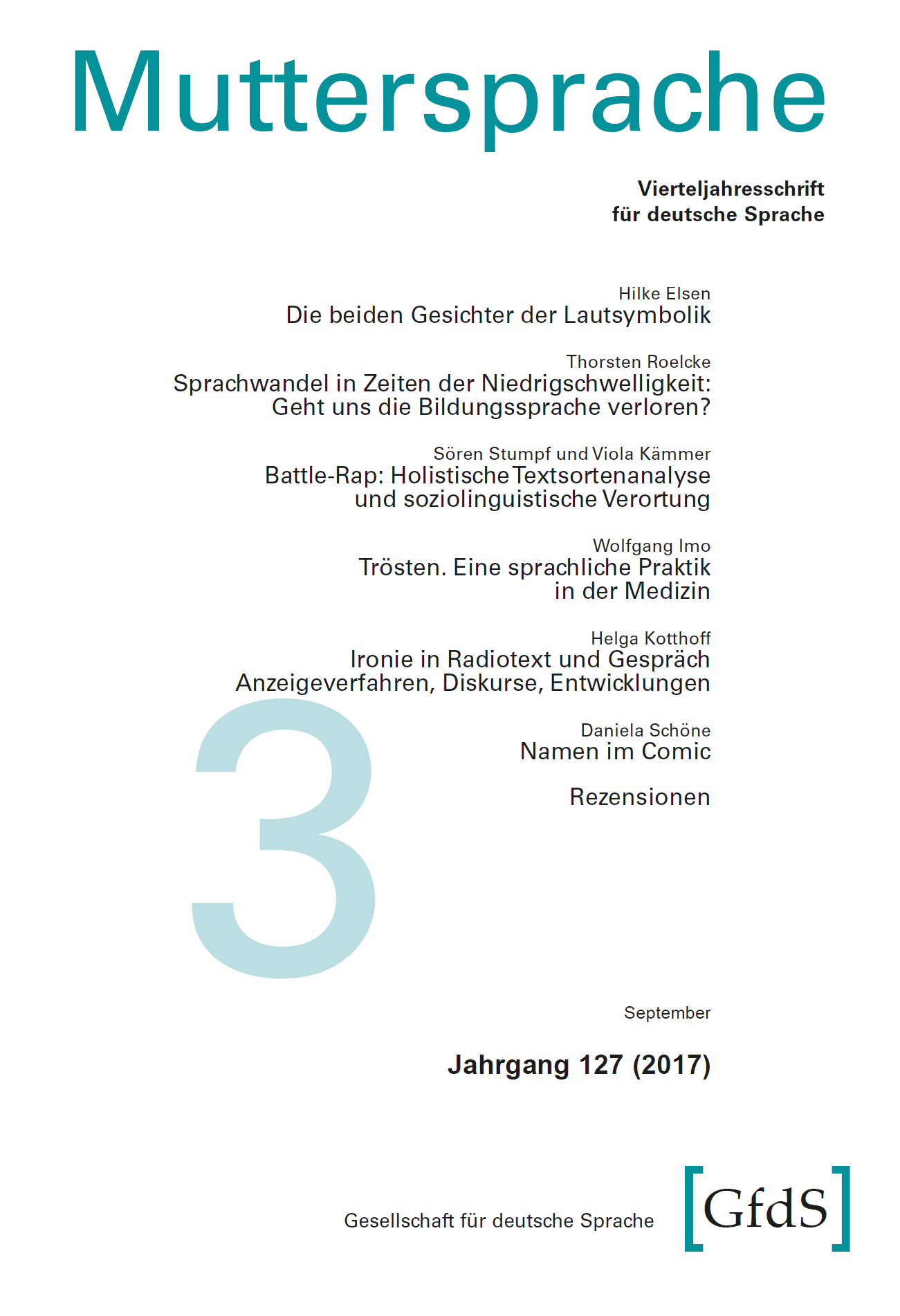Artikeldetails
Stumpf & Kämmer: Battle-Rap: Holistische Textsortenanalyse und soziolinguistische Verortung (MU)

Produkttyp: Beitrag (Zeitschrift)
Autor(inn)en: Sören Stumpf / Viola Kämmer
Titel: Battle-Rap: Holistische Textsortenanalyse und soziolinguistische Verortung
Publikation in: Muttersprache, 127. Jahrgang, Heft 3
Seiten: 173–196 (24 Seiten)
Erschienen: 15.09.2017
Abstract: siehe unten

Preis: 4,90 € inkl. MwSt.
(Download)
Abstract
Der Artikel nimmt auf der Grundlage von Transkriptionen eines Online-Battle-Rap-Wettbewerbs eine holistische Analyse der Textsorte Battle-Rap vor. Aus soziolinguistischer Sicht erfolgt eine Verortung der Textsorte in das Goffman’sche Face-Konzept. Dabei kommen wir zu dem Schluss, dass sich Battle-Raps vor allem dadurch auszeichnen, gegen die grundlegenden Prinzipien des »face-work« zu verstoßen, und sie sich deshalb mit dem von Goffman skizzierten Gedanken des »aggressive use of face-work« erklären lassen. Im Mittelpunkt stehen dabei die zentralen Sprechhandlungen des Herabsetzens des Kontrahenten (Dissen) und der Hervorhebung der eigenen Person (Boasten). Diese zeigen sich zum einen in zahlreichen abstrakteren Argumentationsmustern und zum anderen in sprachlich-kreativen Mitteln und Strategien, wobei hier insbesondere Wortspiele eine große Rolle spielen.
Based on the transcriptions of an online battle-rap-competition, this article conducts a holistic analysis of the text type battle rap. Looking at it from a sociolinguistic perspective, the text type can be located in the framework of Goffman’s face concept. It can be deduced that battle rap is mainly characterized by its defying the basic principles of face-work and it can be further explained by what Goffman termed the »aggressive use of face-work«. Central to this text type are the speech acts of debasing the competitor(s) (dissing) and the glorification of the own persona (boasting). Those speech acts can be discovered in various argumentation patterns, and they also find expression in verbally creative means and strategies, such as the play on words.